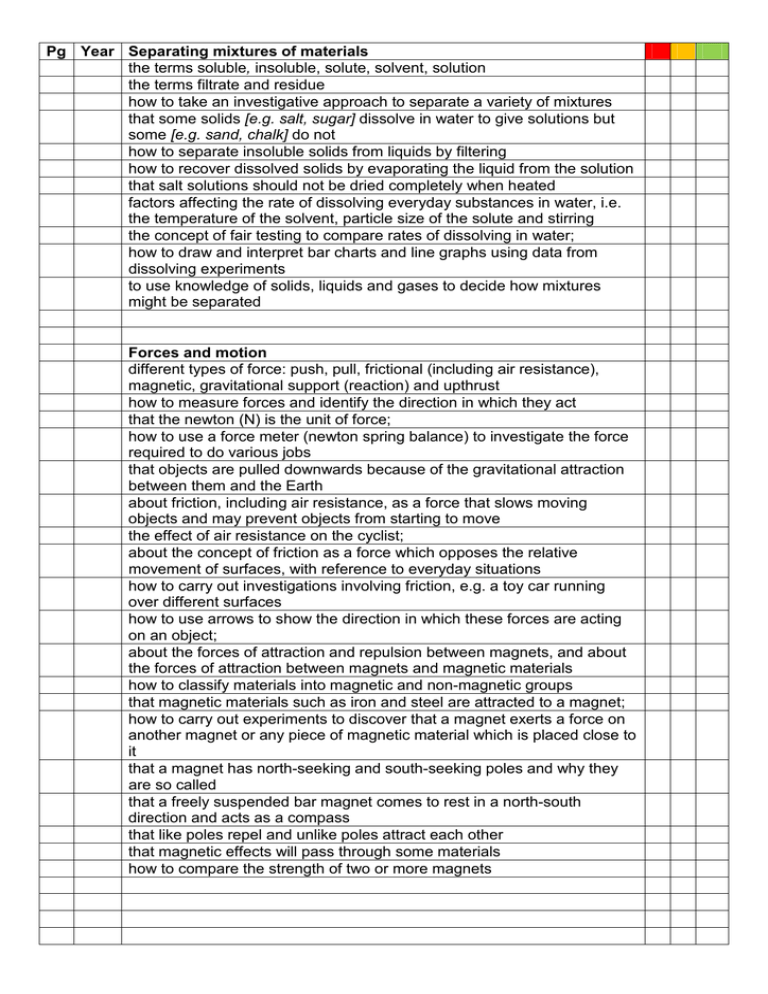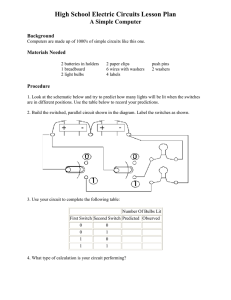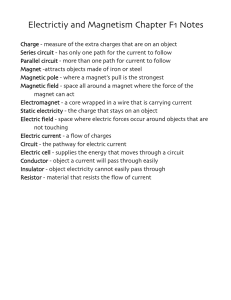year 6 learning objectives
advertisement

Pg Year Separating mixtures of materials the terms soluble, insoluble, solute, solvent, solution the terms filtrate and residue how to take an investigative approach to separate a variety of mixtures that some solids [e.g. salt, sugar] dissolve in water to give solutions but some [e.g. sand, chalk] do not how to separate insoluble solids from liquids by filtering how to recover dissolved solids by evaporating the liquid from the solution that salt solutions should not be dried completely when heated factors affecting the rate of dissolving everyday substances in water, i.e. the temperature of the solvent, particle size of the solute and stirring the concept of fair testing to compare rates of dissolving in water; how to draw and interpret bar charts and line graphs using data from dissolving experiments to use knowledge of solids, liquids and gases to decide how mixtures might be separated Forces and motion different types of force: push, pull, frictional (including air resistance), magnetic, gravitational support (reaction) and upthrust how to measure forces and identify the direction in which they act that the newton (N) is the unit of force; how to use a force meter (newton spring balance) to investigate the force required to do various jobs that objects are pulled downwards because of the gravitational attraction between them and the Earth about friction, including air resistance, as a force that slows moving objects and may prevent objects from starting to move the effect of air resistance on the cyclist; about the concept of friction as a force which opposes the relative movement of surfaces, with reference to everyday situations how to carry out investigations involving friction, e.g. a toy car running over different surfaces how to use arrows to show the direction in which these forces are acting on an object; about the forces of attraction and repulsion between magnets, and about the forces of attraction between magnets and magnetic materials how to classify materials into magnetic and non-magnetic groups that magnetic materials such as iron and steel are attracted to a magnet; how to carry out experiments to discover that a magnet exerts a force on another magnet or any piece of magnetic material which is placed close to it that a magnet has north-seeking and south-seeking poles and why they are so called that a freely suspended bar magnet comes to rest in a north-south direction and acts as a compass that like poles repel and unlike poles attract each other that magnetic effects will pass through some materials how to compare the strength of two or more magnets Pg Year Light Know that light travels from a source Know that a luminous source gives out light; and some examples Know that we see things only when light from them enters our eyes Know the difference between luminous and illuminated. Know that light travels in straight lines;: Know how to show the direction light is travelling. Know how to draw simple diagrams to show that light rays, travelling in straight lines, enter the eye(s) directly from the luminous object Know what the words transparent and opaque mean. Know how shadows are formed Investigate the effect of some factors that could change the size and shape of a shadow – e.g. different distances between source, object and screen Be able to carry out a fair test to investigate the size of a shadow. Be able to draw a graph to show results. Know that light is reflected from surfaces [e.g. mirrors, polished metals] Know what happens to the direction of light when it hits a mirror. Know why we can see things in mirrors. Know how to use rays to show how we can see things in mirrors. Know how to test surfaces to see if they are good at reflecting light. Know which surfaces are good at reflecting light. Know how to make surfaces reflect light better. Electricity Know which materials conduct electricity. Know why a switch works. Know what some circuit components do. Know why we use symbols to draw circuits. Know the symbols for circuit components. Know how to draw circuit diagrams. Know that electrical devices will only work if they are part of a complete circuit Know and that each part of the circuit must be a conductor of electricity Know the term in series Know how to construct series circuits Know how changing the number or type of components in a series circuit can make bulbs brighter or dimmer Know the relative brightness of bulbs in series circuits using up to 3 bulbs and 3 cells Know that normal brightness describes one bulb lit by one cell. Other circuits can be compared with this. Know the difference between a series and parallel circuit. (Know the relative brightness of bulbs in parallel circuits) extension Know how the length of a wire affects the brightness of bulbs in a circuit. Know how the thickness of a wire affects the brightness of bulbs in a circuit. Know why changing the wire makes a difference. Know how to interpret and draw circuit diagrams where the components are connected in series Know how to recognise a short circuit and be aware of the safety implications Habitats and adaptation You should know/understand: What is meant by the word ‘habitat’ That there are many different types of habitat and to give examples That many different organisms can be found in different habitats Describe some of the physical/non-living factors of two contrasting habitats such as a typical British (oak) woodland and a desert That plants and animals have to adapt to their environment in different ways (link to the two different habitats above e.g. how cacti adapt to little rainfall) That feeding relationships exist within such habitats Know what a food chain is/shows Know how to construct a food chain based on the feeding relationships found in different habitats The definitions of the words: producer, consumer, herbivore, carnivore and ominivore That food webs show more complex feeding relationships That food chains can be identified from food webs


